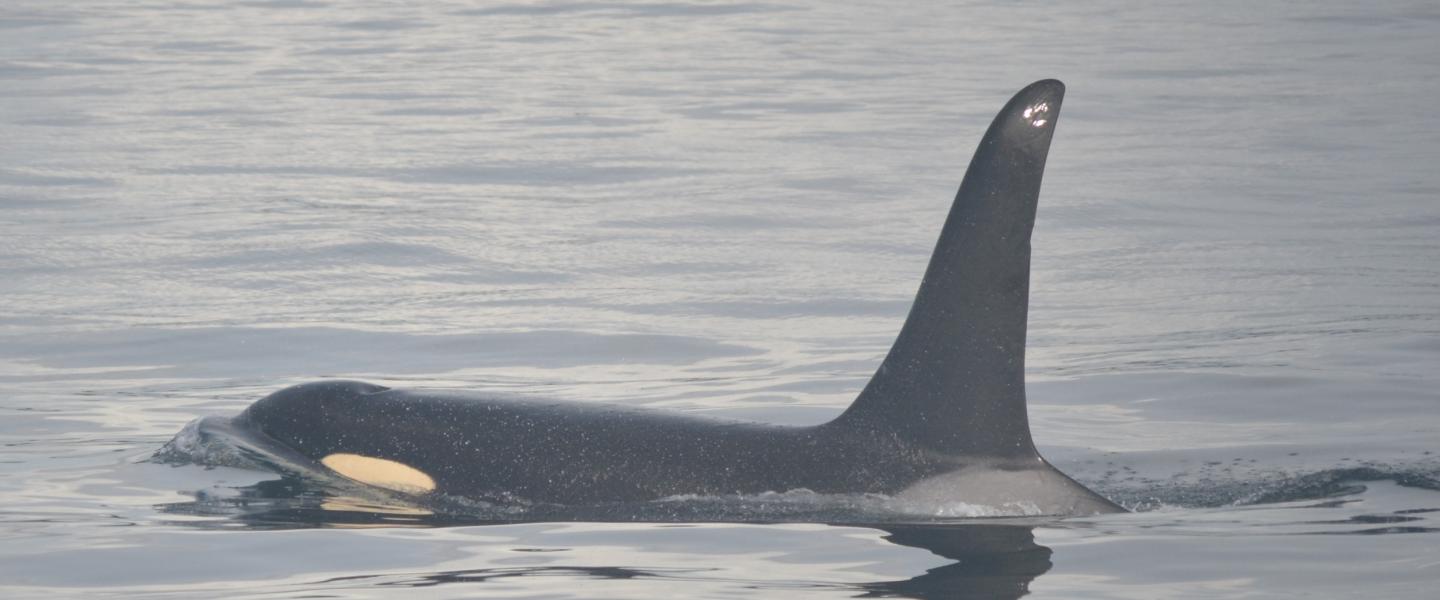
The Salish Sea around the San Juan Islands is considered to be the premier location in the world to see killer whales in the wild. Your average whale watcher will look out across our beautiful water and say that they are looking at some really nice black and white orcas. This is true, but there is so much more going on!
The orcas that we primarily see in this area can be split into two very distinct groups, known as ecotypes. These ecotypes are not only genetically distinct populations, but are also behaviorally distinct. This means that the populations do not interbreed, have completely different diets, speak completely different languages and possess totally different behavior sets. Worldwide there are currently ten recognized ecotypes of killer whales, but some scientists estimate there may be as may as 20 of these different groups. The orcas that we see here most often fall into two of these groupings known as Residents and Transients or Bigg’s Killer Whales.
Residents
Along the North Pacific coast in North America the Resident ecotype can be split into two distinct populations, which can be referred to as “sociotypes.” These two groups do not speak the same languages, they do not interbreed (that we know about), and they have different behavior profiles in terms of their global movement and range. We call these two populations the Northern Residents and the Southern Residents. Northern Residents have historically spent their time in British Columbia in Johnstone Strait at the northern end of Vancouver Island, while the Southern Residents have historically spent their summers in and around the San Juan Islands at the Southern end of Vancouver Island.
Southern Resident orcas are primarily salmon eaters, with Chinook salmon, also known as king salmon, making up about 80% of their summertime diet. These whales are absolutely dependent on the salmon cycle and will follow the salmon throughout the year. During the months of June-September we have a huge abundance of salmon in the waters right off the west side of San Juan Island as the fish make their way up to the Fraser River watershed to spawn. This draws the whales in from the open ocean, where they spend the winter cruising up and down the coasts of Washington, Oregon, and even as far south as Monterey Bay in California searching for pockets of fish. During peak season here in the islands we have been lucky enough to see orcas on about 90-95% of our tours. Residents are a medium-sized ecotype of orca who live in large matriarchal societies. They are characterized by having rounded dorsal fins and open saddlepatches. Behaviorally they are very playful at the surface, often engaging in acrobatic, surface-active displays.
Transients
Transients, also known as Bigg’s killer whales, are marine mammal eaters. Their diet consists primarily of harbor seals (60% of their diets), but they will also eat sea lions, porpoises, dolphins, and whales. The transients that we see here in the Salish Sea are considered to be a distinct population, known to hang out primarily in the waters off of British Columbia, Washington, and Oregon, but they have also been seen off the coast of California and even up in Alaska. There are also populations known to reside primary off the coasts of Mexico and California as well as a population off the coast of Alaska. Transients tend to live in small matriarchal groupings of 4-6 individuals, but, unlike the Residents, it is not totally unusual to see an individual (usually adult male) traveling by himself. Behaviorally I describe these whales as stealthy; they are hunting very intelligent mammals so it is very rare to see Transients engaging in surface activity (unless after a kill) or long loud vocalizations as it gives away their position to potential prey. Physically, they are a large bodied ecotype with, closed, all-grey saddlepatches, and exaggeratedly pointed dorsal fins. When distinguishing between Residents and Transients I also tend to look at their eyepatch marking, the white spot on their heads, as an indicator of ecotypes. Transients tend to lift their heads further out of the water with each exhale to reduce underwater sound, revealing a slightly different tilt to the marking. Transients also are apt to have more scarring on their bodies due to the aggressive nature of their prey.